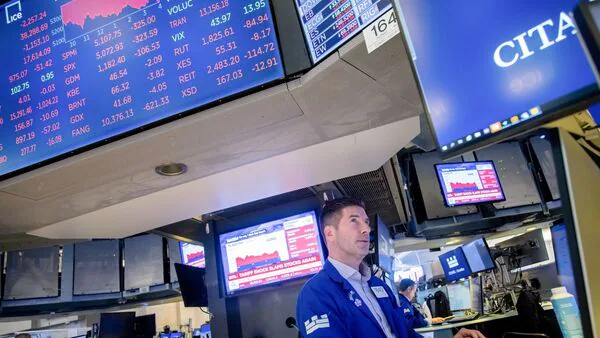The Dow Jones Industrial Average (NYSE: DJI) faced a tumultuous trading session on Monday, opening with a steep 1,100-point drop before briefly plunging over 1,500 points. Although the index clawed its way into positive territory at one point, it remained highly volatile and was down over 850 points by mid-morning. The dramatic swings come as markets react to escalating trade tensions between the United States and China, fueled by a new wave of retaliatory tariff threats.
President Trump intensified the ongoing trade conflict with China on Monday by threatening an additional 50% tariff on Chinese goods. This move comes in response to Beijing’s announcement of a 34% retaliatory tariff on U.S. imports last week. Trump declared on Truth Social that unless China withdraws its new tariffs by April 8, the U.S. would implement the additional duties starting April 9.
This latest escalation follows Trump’s imposition of a blanket 10% tariff on all imports into the U.S., which took effect on April 5. The administration has also targeted specific countries with higher tariffs, including China, which already faces a cumulative duty of 54% on its exports to the U.S. The president’s hardline stance has drawn criticism from both domestic and international observers, with fears mounting over the long-term economic damage of a prolonged trade war.
Beijing has responded aggressively to Washington’s tariffs. In addition to the 34% levy, China has implemented export restrictions on rare earth elements critical to U.S. industries and added several American firms to its “unreliable entities” list. These measures are designed to exert pressure on the U.S. while protecting China’s own economic interests.
China’s Ministry of Commerce stated that these actions are aimed at safeguarding national security and ensuring fair trade practices. However, analysts warn that such moves could disrupt global supply chains and exacerbate existing economic uncertainties.
The escalating tit-for-tat tariffs have sent shockwaves through global financial markets. On Monday, the Dow’s sharp decline mirrored broader market turmoil, with the S&P 500 nearing bear market territory, defined as a 20% drop from recent highs. Technology stocks, particularly those reliant on global supply chains like Apple and Nvidia, have been hit hardest.
Asian markets also suffered significant losses earlier in the day. Hong Kong’s Hang Seng Index dropped over 13%, marking its worst single-day performance since 1997, while Japan’s Nikkei fell nearly 8%. Oil prices have slid to multi-year lows, and cryptocurrencies like Bitcoin have seen sharp declines as investors flee riskier assets.
The volatility has been further amplified by comments from Federal Reserve Chair Jerome Powell, who warned that tariffs could stoke inflation while dampening economic growth. Investors now anticipate multiple interest rate cuts by year-end as the central bank seeks to stabilize the economy.
Trump’s tariff strategy is part of a broader effort to rebalance global trade relationships and bolster domestic manufacturing. However, critics argue that these measures risk alienating key trading partners and undermining international cooperation. The European Union has hinted at retaliatory actions of its own, while Canada has already imposed new duties on select American exports.
The standoff with China represents the most significant flashpoint in this strategy. Trump has accused Beijing of “long-term trading abuses” and insists that his policies are necessary to protect American industries. However, some experts caution that both countries stand to lose in a prolonged trade war, with higher costs for businesses and consumers alike.
As markets grapple with these developments, uncertainty remains high. While some investors hope for a resolution through negotiations, Trump’s latest statements suggest little room for compromise. On Truth Social, he urged Americans to “be strong, courageous, and patient,” promising that “greatness will be the result.”
For now, traders are bracing for continued volatility as they assess the economic fallout of these escalating trade tensions. With additional tariffs set to take effect this week unless an agreement is reached, the stakes for both nations, and global markets, could not be higher.

